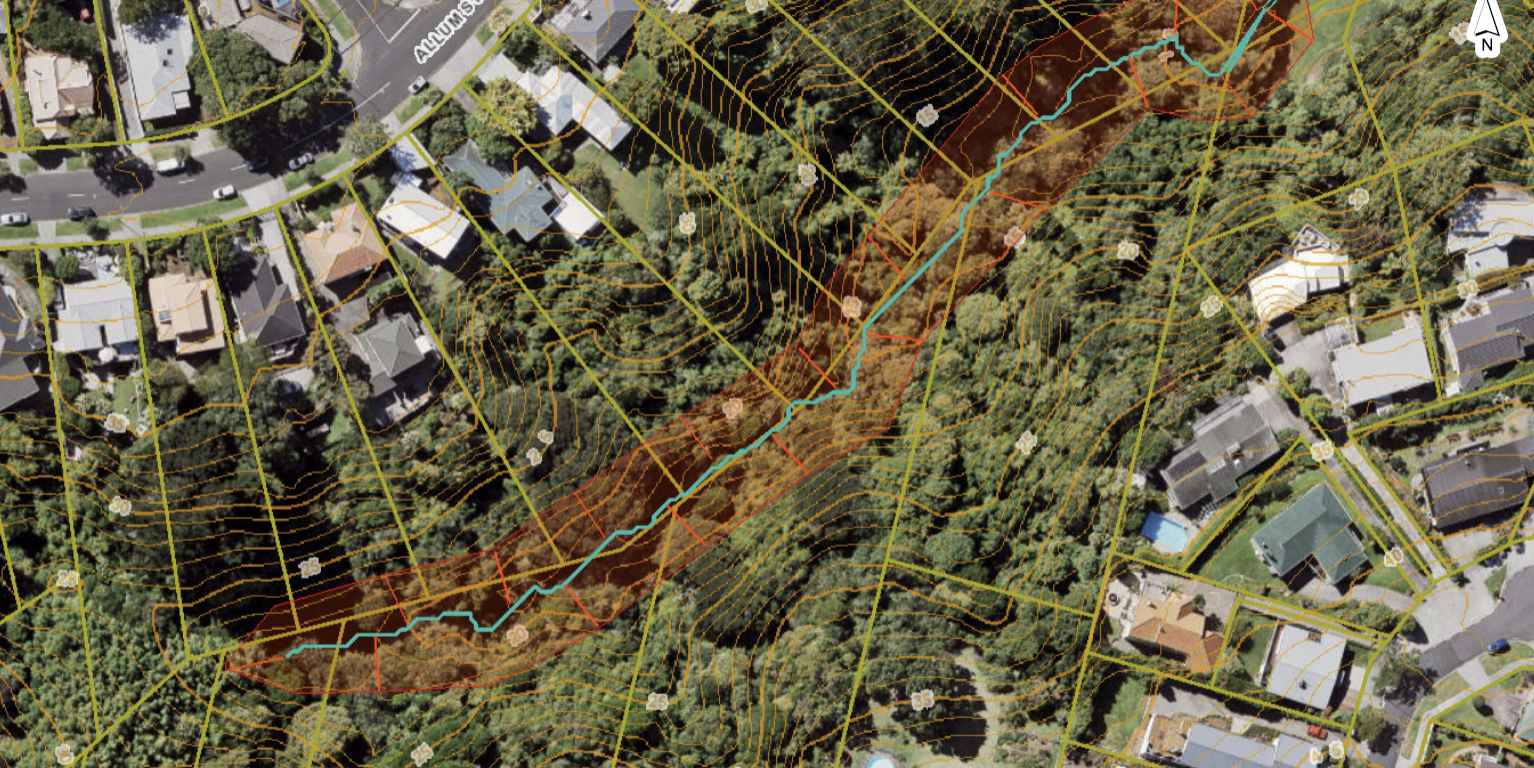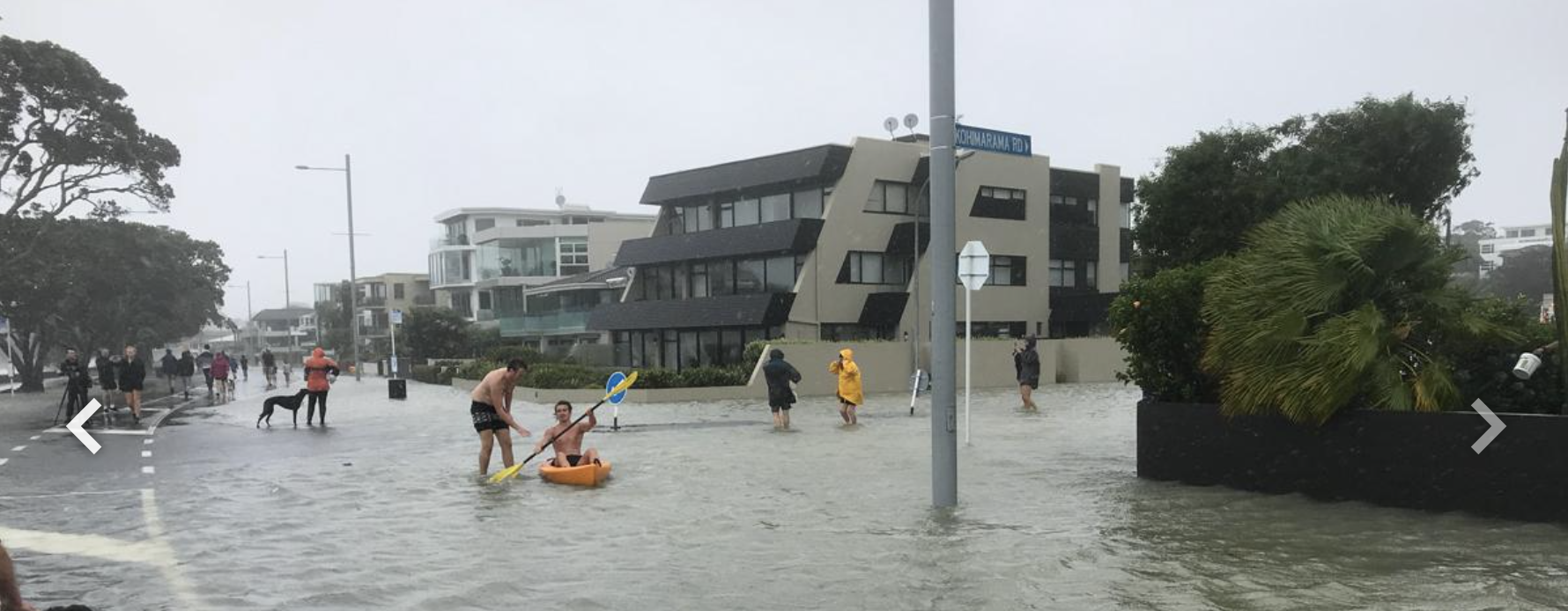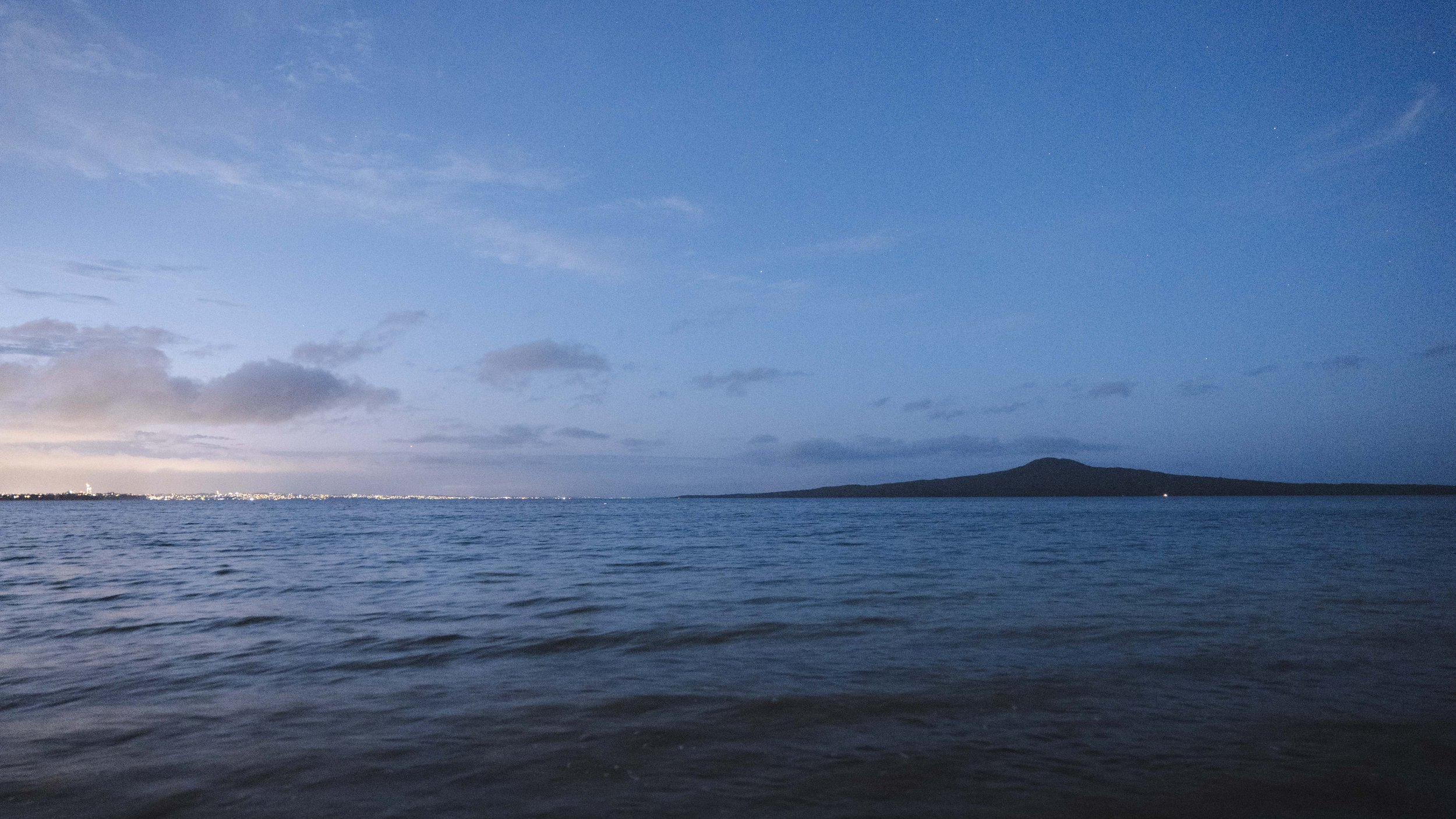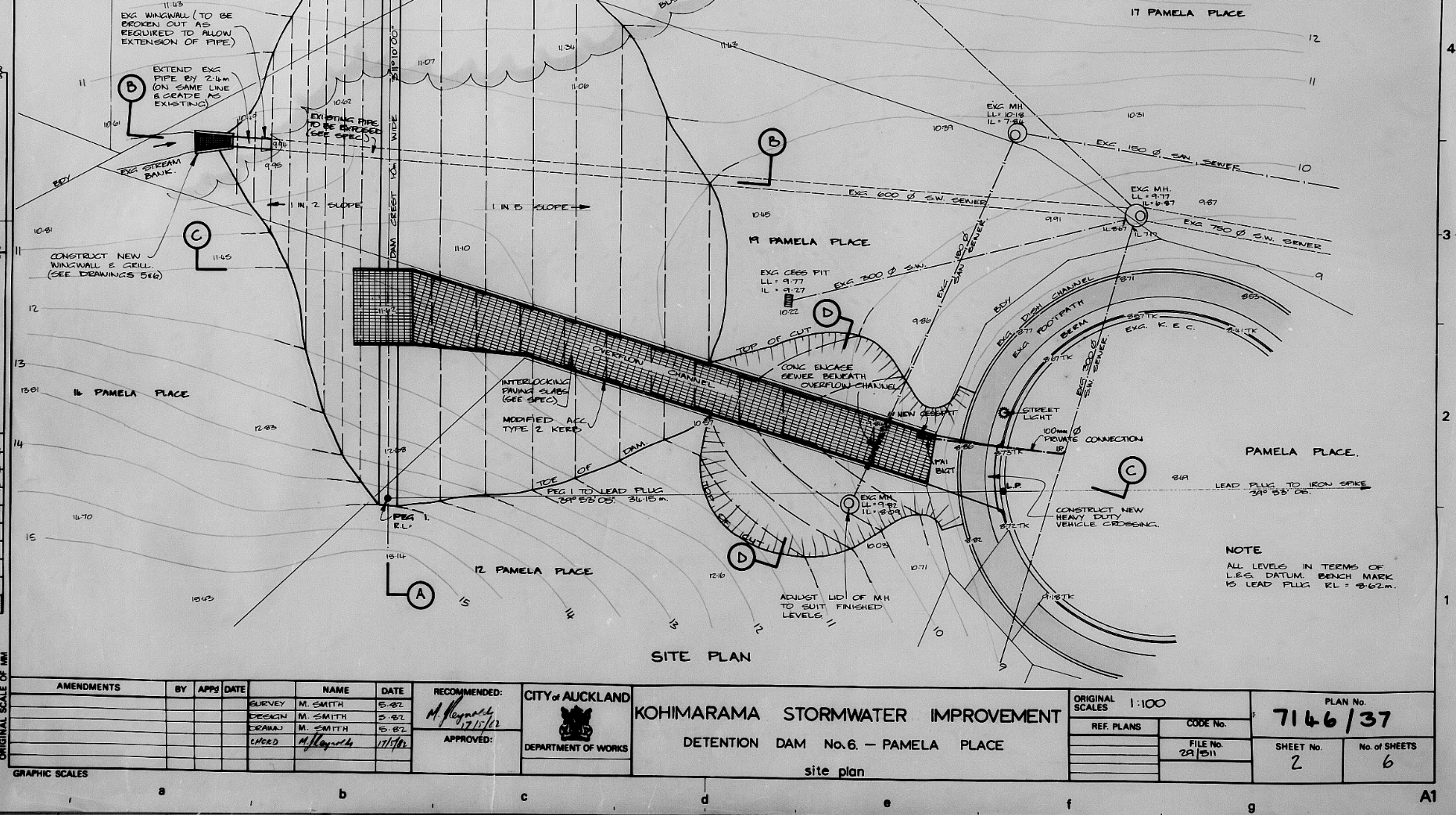
Water
Kohimarama Forest hosts one of the few remaining urban headwaters that provide a direct, permanently flowing connection between the spawning ground for native aquatic life and the ocean that they must return to, to survive. The leaves that fall into the stream are food for insects, which are food for fish, which themselves are food for other fish and seabirds when they reach the ocean. There is also visible evidence in this forest of the complex network of water infrastructure that sustains human life. An opportunity exists in this forest for visitors to see and to understand that water is the life source of all living beings and for us to be taught how to care for water as our most precious resource.

Communicating With Water
Māori believe that if we are to interact with water appropriately we must learn to ‘commune’ with the water; to listen, to smell, to taste and to observe the waterway and to understand what each variation means. Water communicates its needs to us, and our comprehension depends entirely upon the intimacy of our relationship with it. The maintenance of this relationship sits at the heart of kaitiakitanga – the Maori principle of care and protection.
According to Maori we cannot understand the needs of our waterways unless we live with and by them. Thus the degradation of our waterways is believed to be part of a larger story of colonisation, urban migration and the loss of ancestral knowledge around how to care and communicate with nature.
Wai Maori: A Māori Perspective on the Freshwater Debate. Tina Ngata, Nov. 2018

Stream Restoration
Caring for Urban Streams - Quick Reference Guide
Auckland Council
March 2013
Restoration requires strategies that reduce stressors, that cause the decline in stream health, as quickly as possible. But regeneration of waterways after damage has been done is painstakingly slow.
Contaminant reduction is slow due to it being stored within soils on the stream edge. Once the contaminants have been reduced recolonisation of native fish can be slow due to damage to the local source populations . Physical obstructions (both temporary and permanent) often block the access pathway from the ocean to the forest spawning grounds and habitat features that support optimal temperature and nutrient levels, to entice new populations take a long time to reestablish.

Essential water infrastructure
Kohimarama Forest Urban water infrastructure plan
Auckland Council & Watercare
4 Dec 2021
The forest is crossed by a network of wastewater pipes, stormwater pipes and overland flow paths. These pipes are in the same location as the permanently flowing stream and wetland areas. Each one of these types of water require us to understand them and to maintain them if we are to ensure that they can fulfil their particular functions. Most importantly, each type of water (waste water, storm water, stream water)must be cleansed before mixing directly with the others, so that it does not interfere with their function. Stormwater from the surrounding catchment area is currently collected into pipes that drain directly into the stream. It is therefore vital that neighbouring properties understand how to help filter dirty water through the forest’s riparian zone before it enters the stream and the ocean beyond.

Riparian Zone Planting
Caring for Urban Streams-Stream-Side Planting
Auckland Council
April 2013
Riparian zones are vital to maintaining and enhancing the health of a stream. Proper planting can improve channel and bank stability, reduce contaminant and nitrate levels reaching the stream, maintain cooler water temperature, reduce the duration and magnitude of floodflows and improve the type and amount of food nutrients entering the stream. They are, therefore, vital to providing a healthy habitat for aquatic and terrestrial plants and animals.

A Flood Prone Valley
Caring for Urban Streams-Flooding
Auckland Council
April 2013
Kohimarama Forest plays a significant role in reducing stormwater runoff from its catchment area in support of the series of infrastructure detention and damming projects that are necessary as the stream goes underground. Any increase in the quantity of stormwater resulting from climate change or urban development will require the forest to increase its capacity to absorb water, to slow flow and to resist erosion so that existing infrastructure can continue to do its job in protecting surrounding neighbourhoods from flooding.
Auckland Council Caring for Urban Streams - Flooding

Maintenance of Infrastructure
John La Roche
Co-founder of Eastern Bays Songbirds Project
7 July 2015
Evidence submitted to Auckland Council noting the history of significant flooding downstream of Kohi Forest, the role that the forest plays in mitigating stormwater runoff in support of the series of significant infrastructure detention and damming projects implemented in the 1960's and 1980's on 19 Pamela Place as the stream goes underground. La Roche also highlights that the infrastructure projects on Pamela Place have not been properly recorded on Council Infrastructure maps which means they may not be adequately maintained.

Watercourse Preservation
Eastern Bays and Glendowie Watercourse Assessment Report
Morphum Environmental Ltd for Auckland Council
2020
A report prepared for Auckland Council (Healthy Waters) to assess character and condition of the watercourses within the area. The report "strongly advocates" for "adherence to the principle of avoidance of development impacts to preserve remaining open watercourses" within the area, including Kohimarama Forest.

Stormwater Infrastructure
M. Smith
Auckland Council
17th May 1982
A set of engineering drawings for infrastructure proposed but not r implemented for 19 Pamela Place to mitigate flooding issues in downstream areas and water quality flowing into Madills Farm and the Hauraki Gulf.




